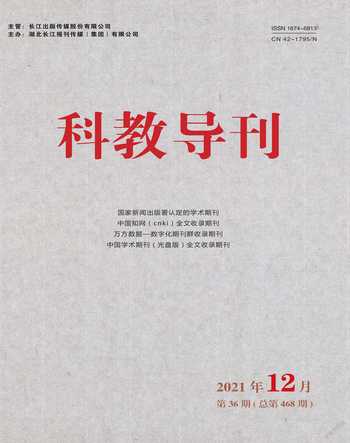教师放手要有方、有度
李德强
中图分类号:G422文献标识码:CDOI:10.16400/j.cnki.kjdk.2021.36.002
多年以前,在自然课改革的研究中,刘默耕老师曾经打过一个十分形象的比方,科学学习就如同过河,有多种方法:可以是坐一条船过河,可以是教师先造好桥,让学生排着队,喊着“1—2—1”整齐地走过去,也可以是教师把学生抱或者背过去。
还有一种方法,学生捡河里的大小石块垫脚,自己过河。教师站在河对岸引领,学生的方向始终朝着目标。即使有学生落水了也不要紧,只要伸手拉一把、扶一把,那个学生就会跟上大部队。
前者可以称为“过桥”,重在以扶为主,后者可以称为“造桥”,是以放为主,学生在摸索中学习,具有明显的自主学习意识。不过,在实施“造桥”教学时,有老师只要彻底放手,让学生自己“摸爬滚打”,就会出现“乱糟糟”的课堂景象,教学效果不尽如人意。可见,即便是教师放手,也要综合考量,放得有方,放得有度。具体来讲,以下三个方面是至关重要的:
首先,需要坚守儿童立场。
儿童正处在成长阶段,他们对自然界中万事万物都充满好奇但又缺乏科学的认知渠道和方法,具有很强的可塑性,“没有确定,没有完成,没有成熟”便是其成长的特征。坚守儿童立场,要认识这些特征,把握与之相关的语言、行为、思维等系列表现,更要从思想深处认同这些表现的正常性和合理性。唯有如此,教师对儿童的诸多“越界”行为才能理解、包容、有效引导,继而找到改进教学的路径和方式。
其次,需要坚持素养导向。
随着学科核心素养的提出,学科教学迎来了“素养立意”时代。回到前面过河的例子,展开想象,就会看到这样的场景:当学生在找寻石块向教师靠近的过程中,有的可能会掉进水里,有的可能会迷失方向,有的可能会向同伴求助,有的可能会效仿别人的做法……在如此丰富的实践中,学生能学会什么呢?认真、自律和尊重的态度以及观察、思考和表达的能力等,这些不正是素养中最为核心的部分吗?问题是,在实际的课堂教学中,教师能否如过河般地去引导学生向目标进发?因为这需要教师认识并理解素养对学生一生发展的重大意义,而不是只关注眼前的分数和“绩效”。导向变了,课堂教学的形态也自然变了。
其三,需要着眼长远发展。
真正的学习是应该发生在学生身上的,但学生的学习一定是循序渐进的。有人讲“教育是慢的艺术”,其精髓就是教学必须从长远的角度考虑培育和发展的可能性,这就是着眼长远发展。慢并不代表着随意生长,而是一种向着目标的“日积月累”。
马丁·卡普鲁斯认为,儿童能学习什么,不仅取决于他的智力水平,也取决于课程的组织和教法。着眼长远发展,我们就能看到,在科学教学中,从扶着学生找寻答案到引导学生自己提出问题并“揭开谜底”,就是一個着眼长远的过程。其间,学生从不会到会,从胆怯到勇敢,从模仿到创新,许多都在变,不变的就是教师对学生始终如一的信任、再信任以及对目标的共同追寻。支撑这一切的,就是教师对学生的成长有信心,并且坚信他们在科学实践中不断磨炼出素养是需要时间的,是需要耐心等待的。
Teachers should Let Go in Correct Method and Moderate Way
LI Deqiang
中图分类号:G422
文献标识码:C
DOI:10.16400/j.cnki.kjdk.2021.36.002
LI Deqiang
Deputy Editor in Chief of Science Textbook of People's Education Hubei Education Press
Member of the Teaching Guidance Committee of Basic Education of the Ministry of Education (Science)
Vice Chairman of Primary School Science Teaching Steering Committee of Hubei Provincial Department of Education
Many years ago,in the study of science curriculum reform,Mr. Liu Mogeng once made a very vivid example. Scientific learning is like crossing a river. There are many ways:it can be to take a boat to cross the river,it can be the teacher who builds a bridge first,let the students line up and walk past neatly shouting “1-2-1”,or it can be the teacher who holds the students or carries them on his back.
There is another way,students pick up the size of stones in the river to pad their feet and cross the river by themselves. The teacher stands on the other side of the river to lead the students,and the direction is always towards the goal. Even if a student falls into the water,it doesnt matter. As long as he reaches out and holds it,the student will keep up with the big army.
The former can be called “crossing the bridge”,which focuses on helping,while the latter can be called “building the bridge”,which focuses on letting go. Students learn in exploration and have an obvious sense of autonomous learning. However,when implementing the “bridge building”teaching,as long as some teachers completely let go and let the students “climb and roll”,there will be a “chaotic”classroom scene,and the teaching effect is not satisfactory . It can be seen that even if teachers let go,they should consider it comprehensively,put it properly and appropriately. Specifically,the following three aspects are crucial:
First,we need to stick to the position of children.
Children are in the growth stage. They are full of curiosity about everything in nature,but lack scientific cognitive channels and methods. They havestrong plasticity. The characteristics of their growth are “no determination,no completion and no maturity”. To stick to the position of children,we should understand these characteristics,grasp a series of related expressions such as language,behavior and thinking,and recognize the normality and rationality of these expressions from the depths of our thoughts. Only in this way can teachers understand,tolerate and effectively guide many “cross-border”behaviors of children,and then find ways and means to im - prove teaching.
Secondly,we need to adhere to the quality orientation.
With the proposal of subject core literacy,subject teaching has ushered in the era of “literacy intention”. Go back to the previous example of crossing the river and expand your imagination. You will see such a scene:when students are looking for stones to approach teachers,some may fall into the water,some may lose their way,some may ask their peers for help,and some may follow others,methods... What can students learn in such rich practice? The attitude of seriousness,self-discipline and respect,as well as the ability to observe,think and express,are not these the most core parts of literacy? The question is,in the actual classroom teaching,can teachers guide students to the goal like a river,because this requires teachers to recognize and understand the great significance of literacy to students,life development,rather than focusing on the immediate scores and “performance”. With the change of orientation,the form of classroom teaching has naturally changed.
Third,we need to focus on long-term development.
Real learning should happen to students,but students,learning must be gradual. Some people say that “education is a slow art”,and its essence is that teaching must consider the possibility of cultivation and development from a long-term perspective,which is to focus on long-term development. Slow does not mean random growth,but an "accumulation " towards the goal.
Martin Kaplus believes that what a child can learn depends not only on his intellectual level,but also on the organization and teaching method of the curriculum. With long-term development,we can see that in science teaching,it is a long-term process from helping students find answers to guiding students to ask questions and "uncover the answers". During this period,students never come to the meeting,from timidity to courage,from imitation to innovation,many are changing. What remains unchanged is teachers,consistent trust,re trust and common pursuit of goals. What supports all this is that teachers have confidence in the growth of students and firmly believe that it takes time and patience for them to constantly hone their literacy in scientific practice.

